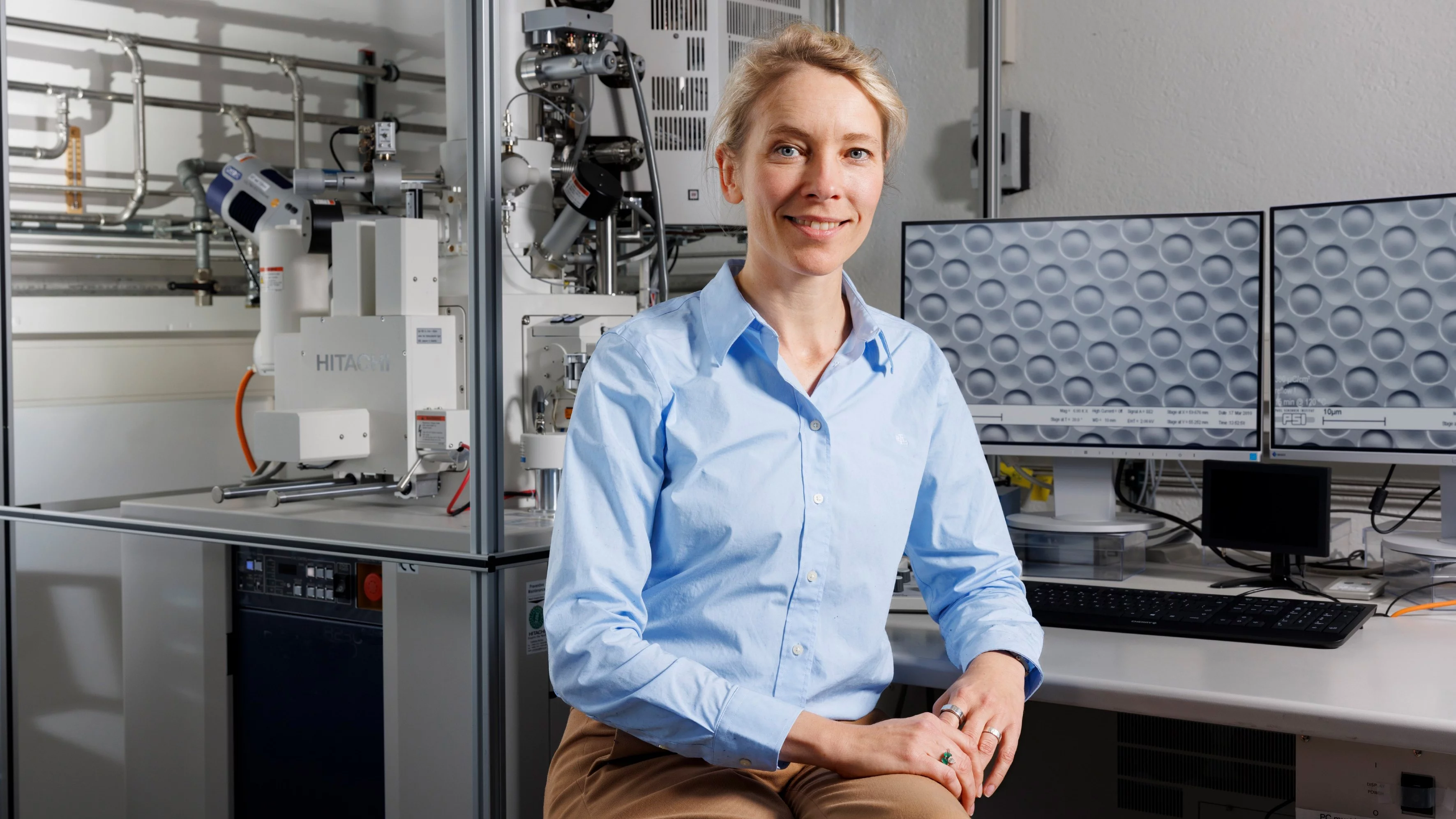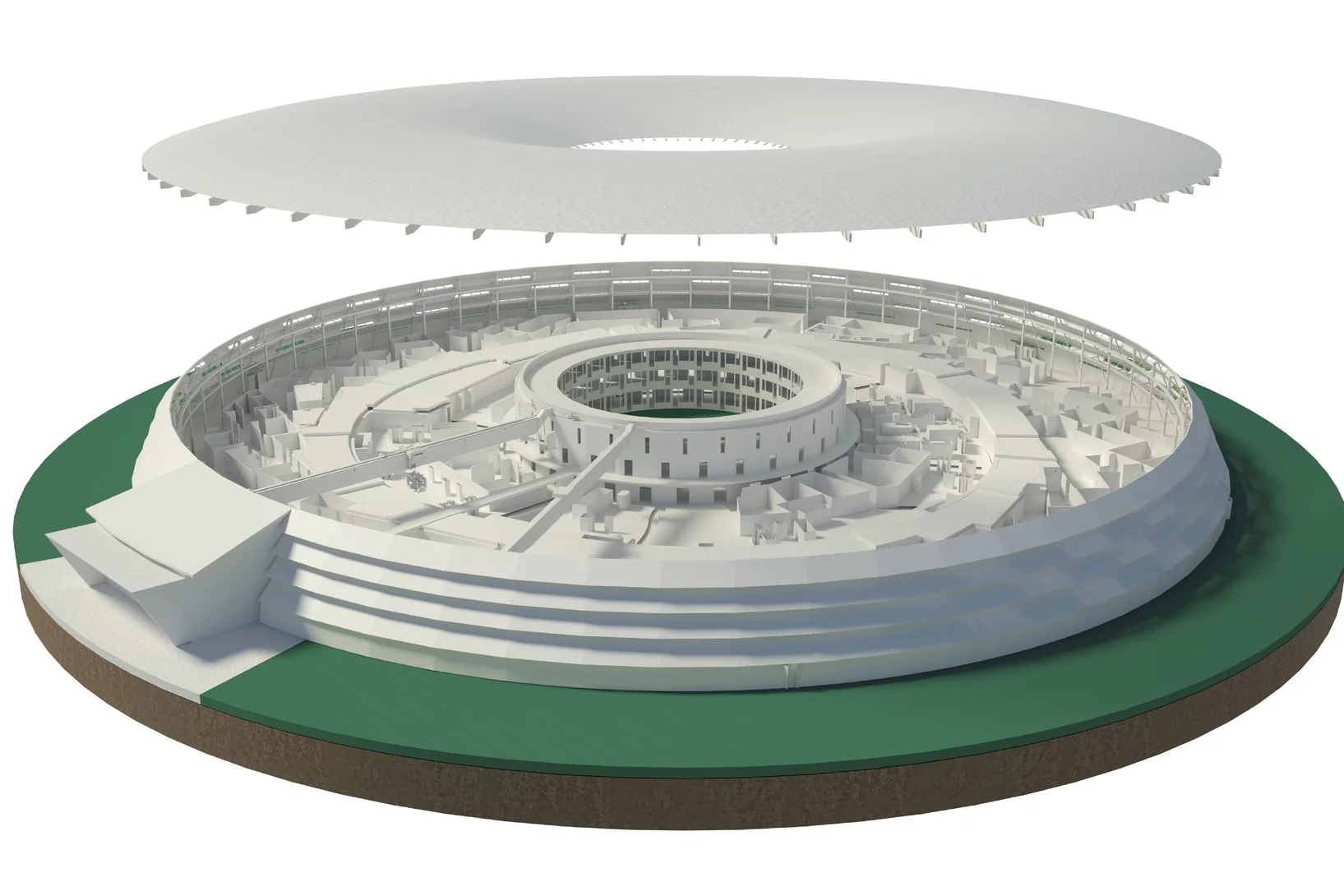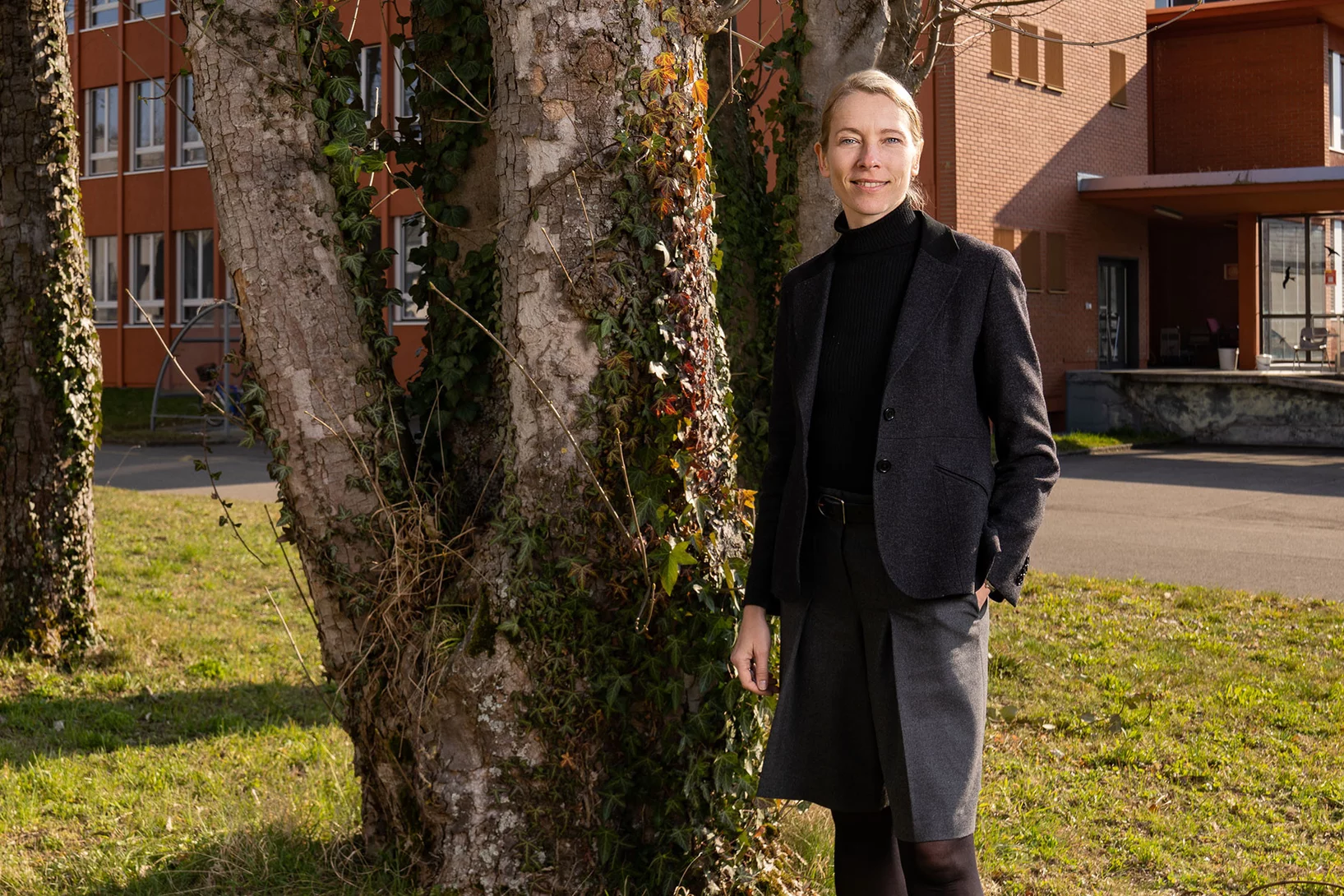PSI researcher Kirsten Moselund has been selected by the European Research Council ERC to receive funding for her project NEON. Moselund and her group will use the research grant of around 3.3 million Swiss francs to investigate neuromorphic networks for machine learning applications using laser light instead of conventional electronics.
PSI researcher Kirsten Moselund has been awarded a prestigious grant in support of her research project NEON, providing around 3.3 million Swiss francs distributed over the next five years. Within the framework of this project, her research team will develop novel optical networks capable of carrying out machine learning tasks with unprecedented speed and energy efficiency.
Kirsten Moselund is head of the Laboratory for Nano and Quantum Technologies in the Center for Photon Science at PSI. At the same time, she is a full professor of electrical and microengineering at EPFL. The European Research Council gave her proposed research project NEON a positive evaluation and has awarded the grant. The funding will be provided by Switzerland's State Secretariat for Education, Research and Innovation SERI.
The focus of NEON is on so-called neuromorphic photonic networks. Such systems mimic the way biological neural connections work – using laser light instead of electrical signal transmission as in conventional computing technology. Light offers virtually unlimited bandwidth and high transmission speed, potentially enabling reduced energy consumption as well.
Previous neuromorphic photonic networks, however, have been based on a principle that requires large footprints and provides only limited flexibility, thus constraining both the scalability and reconfigurability of the resulting networks. With NEON, Moselund and her team are pursuing a new concept for a neuromorphic photonic platform: They want to use lasing modes to create artificial neurons connected to each other through their competition for optical gain. This should enable the realisation of networks that are significantly denser and thus take up much less space.
In an earlier joint project with researchers at Imperial College London, it was demonstrated that the basic idea works: A simple mode-based neuromorphic photonic network achieved impressive levels of accuracy in image classification tasks. Software was required, however, to accomplish the final step of the analysis. Instead, the NEON project will exploit principles of solid-state physics, putting so-called electrooptic modulators to work.
The goals of the NEON project are a deeper scientific understanding of the physics of such networks, an improved architecture, and finally a path towards higher energy efficiency. Specifically, with NEON the researchers hope to achieve and demonstrate a fully integrated neuromorphic photonic platform with a diameter of only around 100 micrometres – roughly the width of a human hair. If they succeed, this would represent a significant advance over the current state of the art.
“Photonics offers us fascinating possibilites for building artificial networks capable of learning,” summarises Kirsten Moselund. “The current trend in artificial intelligence is leading towards ever-higher energy consumption. With our research, we hope to help break this trend and at the same time to build better, more high-performance neuromorphic networks based on solid-state physics instead of software.”
The awarded funding will be used, among other things, to recruit several researchers for doctoral and postdoctoral positions, who will contribute to NEON as part of Moselund's team.
In addition to gaining scientific knowledge, the researchers also see commercial potential; they therefore aim to launch a start-up to further develop and apply the technology.
Contact
More articles related to this topic
About PSI
The Paul Scherrer Institute PSI develops, builds and operates large, complex research facilities and makes them available to the national and international research community. The institute's own key research priorities are in the fields of future technologies, energy and climate, health innovation and fundamentals of nature. PSI is committed to the training of future generations. Therefore about one quarter of our staff are post-docs, post-graduates or apprentices. Altogether PSI employs 2300 people, thus being the largest research institute in Switzerland. The annual budget amounts to approximately CHF 450 million. PSI is part of the ETH Domain, with the other members being the two Swiss Federal Institutes of Technology, ETH Zurich and EPFL Lausanne, as well as Eawag (Swiss Federal Institute of Aquatic Science and Technology), Empa (Swiss Federal Laboratories for Materials Science and Technology) and WSL (Swiss Federal Institute for Forest, Snow and Landscape Research). (Last updated in June 2025)




